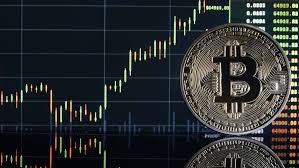As the bitcoin halving looms on the horizon, crypto investors find themselves in a state of anticipation, with the event expected to have significant implications for the digital currency’s price trajectory. With the price of bitcoin soaring to unprecedented heights and the halving event drawing near, analysts are closely examining past halvings to glean insights into potential market outcomes.
Christo de Wit, Luno’s country manager for South Africa, emphasized the uncertainty surrounding the impending halving and its impact on bitcoin’s price. “There are no guarantees, and it is anyone’s guess whether the price will drop, rise, or maintain after the April halving,” he remarked, underlining the unpredictability of cryptocurrency markets.
The bitcoin halving, occurring approximately every four years, entails a reduction in the rate at which new bitcoins are issued into circulation. This mechanism, designed to curb inflationary pressures, sees the bitcoin reward for miners halved, resulting in a decrease in the overall supply of the digital currency. The upcoming halving will see miners’ rewards slashed from 6.25 to 3.125 bitcoins per block, contributing to a reduction in new bitcoin supply.
Reflecting on past halving events, De Wit noted that preceding halvings had often been accompanied by dramatic price surges. However, he cautioned against assuming a direct correlation between halving events and price movements, citing the unique dynamics of the current market cycle. “This cycle already looks very different from previous cycles, with bitcoin testing all-time highs near the halving for the first time in its history,” he remarked, highlighting the evolving nature of bitcoin’s price behavior.
The run-up to the current halving has been marked by significant developments in the cryptocurrency landscape, including the approval of spot bitcoin exchange-traded funds (ETFs) in the United States and substantial inflows into these funds. Additionally, March witnessed a new all-time high bitcoin price, further underscoring the heightened interest and investment in the digital currency.
While historical data may offer insights into potential price movements, De Wit cautioned against overly deterministic interpretations of past trends. “Even if you accept the idea that the halving is a primary driver, there’s no guarantee it will continue to be so in the future,” he cautioned, highlighting the dynamic and unpredictable nature of cryptocurrency markets.
As the crypto community awaits the upcoming halving with bated breath, the consensus remains that while past halvings may provide valuable context, the future trajectory of bitcoin’s price will ultimately be shaped by a myriad of factors, both known and unforeseen.

